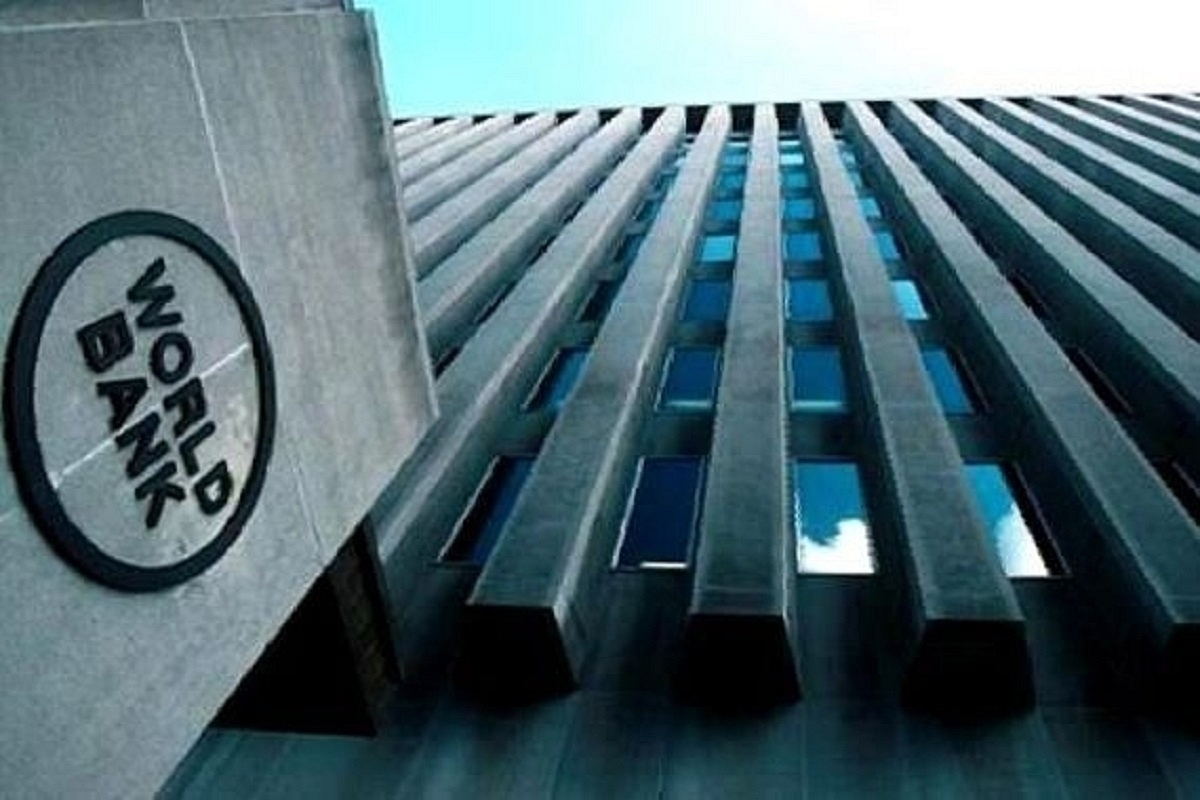News Brief
A Greener Cooling Pathway Can Create A $1.6 Trillion Investment Opportunity In India, Says World Bank
- As per the World Bank report, around 34 million people in India will face job losses due to heat stress related productivity decline.

World Bank building in Washington, DC. (Getty Images)
With temperatures rising steadily in India due to climate change, keeping spaces cool using alternative and innovative energy efficient technologies can open an investment opportunity of $1.6 trillion by 2040, World Bank said in a report.
This also has the potential to reduce greenhouse gas emissions significantly and create nearly 3.7 million jobs," it added.
The report, “Climate Investment Opportunities in India’s Cooling Sector" finds that shifting to a more energy efficient pathway could lead to a substantial reduction in expected CO2 levels over the next two decades.
“India’s cooling strategy can help save lives and livelihoods, reduce carbon emissions and simultaneously position India as a global hub for green cooling manufacturing," said Auguste Tano Kouamé, the World Bank’s Country Director in India.
The report suggests a sustainable roadmap for cooling that has the potential to reduce 300 million tons of carbon dioxide annually by 2040.
The report further said, “India is experiencing higher temperatures every year. By 2030, over 160-200 million people across the country could be exposed to lethal heat waves annually.
"Around 34 million people in India will face job losses due to heat stress related productivity decline."
On food security, World Bank said the current food loss due to heat during transportation is close to $13 billion annually.
"By 2037, the demand for cooling is likely to be eight times more than current levels. This means there will be a demand for a new air-conditioner every 15 seconds, leading to an expected rise of 435 per cent in annual greenhouse gas emissions over the next two decades," it said.
Recognising this challenge, India is already deploying new strategies to help people adapt to rising temperatures, World Bank said.
In 2019, it launched the India Cooling Action Plan (ICAP) to provide sustainable cooling measures across various sectors, including indoor cooling in buildings and cold chain and refrigeration in the agriculture and pharmaceuticals sector and air-conditioning in passenger transport.
Its aim is to reduce the demand for cooling by up to 25 per cent by 2037-38. The new World Bank report proposes a roadmap to support the ICAP’s new investments in three major sectors: building construction, cold chains, and refrigerants.
The report suggested that India’s affordable housing programme for the poor, the Pradhan Mantri Awas Yojana (PMAY), can adopt such changes on scale. This could benefit over 11 million urban homes and over 29 million rural houses that the government aims to construct.
The report also recommended private investments in district cooling technologies. These generate chilled water in a central plant which is then distributed to multiple buildings via underground insulated pipes.
This brings down the cost for providing cooling to individual buildings and can reduce energy bills by 20-30 per cent compared to the most efficient conventional cooling solution.
To minimise rising food and pharmaceutical wastage during transport due to higher temperatures, the report recommended fixing gaps in cold chain distribution networks.
Investing in pre-cooling and refrigerated transport can help decrease food loss by about 76 per cent and reduce carbon emissions by 16 per cent, it said.
India aims to phase out the production and use of ozone-depleting hydrochlorofluorocarbons (HCFCs), used as coolants in air conditioners and refrigerators by 2047.
The World Bank report recommended improvements in servicing, maintenance and disposal of equipment that use HCFCs, alongside a shift to alternative options with a lower global warming footprint.
This can create 2 million jobs for trained technicians over the next two decades and reduce the demand for refrigerants by around 31 per cent.
The right set of policy actions and public investments can help leverage large-scale private investment in this sector.
In India, 45 per cent of the country’s peak electricity demand in 2050 is expected to come from space cooling alone.
Space cooling interventions across India will need to prioritise “thermal comfort for all" while facilitating cooling access for 1.4 billion people and reducing the impact on an already overburdened electricity system.
According to the Bank, this will require sizable investments in creating costly peak generating capacity and result in a significant increase in greenhouse gas (GHG) emissions, unless suitable low-energy alternatives are available to meet thermal comfort needs in buildings.
The report estimates that the market potential and investment opportunity in space cooling will be $1.5 trillion by 2040. Of this, the green buildings market in India has an investment potential of about $1.25 trillion for residential buildings and $228 billion for commercial buildings.
It is imperative for the government to create an adequate enabling investment framework that can attract financing from the private sector.
Support Swarajya's 50 Ground Reports Project & Sponsor A Story
Every general election Swarajya does a 50 ground reports project.
Aimed only at serious readers and those who appreciate the nuances of political undercurrents, the project provides a sense of India's electoral landscape. As you know, these reports are produced after considerable investment of travel, time and effort on the ground.
This time too we've kicked off the project in style and have covered over 30 constituencies already. If you're someone who appreciates such work and have enjoyed our coverage please consider sponsoring a ground report for just Rs 2999 to Rs 19,999 - it goes a long way in helping us produce more quality reportage.
You can also back this project by becoming a subscriber for as little as Rs 999 - so do click on this links and choose a plan that suits you and back us.
Click below to contribute.
Latest